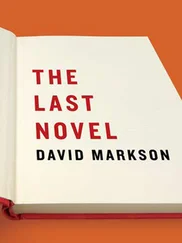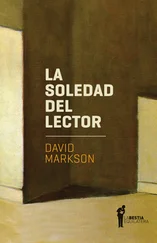Now I knew, knew, that Achilles could certainly catch that tortoise.
Even when Achilles was only the tiniest fraction behind, however, and the tortoise could go only the tiniest fraction past that, what the teacher showed on the blackboard was that there would still always be more fractions.
This finally almost made me want to cry.
So now I know that nobody ever pays attention to a word Cassandra says in the opera, but I also know, know, that the way I know it is by having paid attention.
Philosophy is not my trade.
And in fact it was not Archimedes who had the paradox but was Zeno.
Archimedes was killed by soldiers during some war at Syracuse while he was doing his geometry in the sand. With a stick.
Or have I now just done it all over again?
Oh, well, I suppose it is not one hundred percent impossible that Archimedes was killed with the same stick I was trying to say he was writing with.
I have not forgotten Willem de Kooning's teacher.
What I had meant to write about Willem de Kooning's teacher, however, was not that I had suddenly realized whom he was descended from, but whom he was connected to.
As in the connection from Rembrandt to Carel Fabritius to Vermeer, this obviously is.
Except that what I am now thinking about is the person who was next in line, as a pupil of Vermeer. And then the person who was a pupil of the pupil of Vermeer.
And after that all the way down until the next to last pupil of a pupil had a pupil of his own named Willem de Kooning.
Surely this is much more likely than Willem de Kooning himself having been descended from the man who taught Claude Lorrain how to make pastry?
Ralph Hodgson was born fifteen years before Rupert Brooke, and was still alive almost fifty years after Brooke had died on the same island where Achilles had made one of the women pregnant.
And when Bertrand Russell was more than ninety years old, he could still remember hearing his grandfather talk about remembering the death of George Washington.
As a matter of fact, suppose one day when Willem de Kooning was a pupil, his teacher told him something.
Suppose this was something quite simple, even, such as that russet is not a name one gives to a color.
But also suppose that when Willem de Kooning's teacher said that, he was really repeating something he had been told when he himself was a pupil.
And suppose that the teacher who told it to Willem de Kooning's teacher had been told the same thing when he himself was a pupil.
And so on.
So who is to argue that one day Rembrandt might not have been standing next to Carel Fabritius's easel, and Carel Fabritius said he was going to paint something russet, and Rembrandt said that russet is a color one calls a bedspread?
So in a manner of speaking Willem de Kooning was actually a pupil of Rembrandt.
This is scarcely to suggest that it was Willem de Kooning who painted the gold coins on the floor of Rembrandt's studio, of course.
Although who is to additionally argue that he might not have finished that quiz even more quickly than Carel Fabritius did?
Come to think about it, however, why is it not possible that all of this might go back even farther still?
Why couldn't it just as readily have been Cimabue who told Giotto about bedspreads, for instance, even long before Gilbert Stuart happened to mention it in passing to George Washington?
This is scarcely to suggest that Willem de Kooning was anywhere in the vicinity when Giotto was drawing the perfect circle freehand either, of course.
Unless, on the other hand, I suddenly make up my mind to imagine that he was.
This very sort of imagining being the artist's privilege, obviously.
Well, it is what artists do.
There is a famous canvas in the National Gallery, of Penelope weaving, and nobody stopped the painter from putting everybody from Ithaca into clothes that people did not wear until practically three thousand years later, during the Renaissance.
In fact it was similarly Leonardo's own doing when he made the table in The Last Supper far too small for all of those Jewish people who are supposed to be eating at it.
Or Michelangelo's, when he took away superfluous material on his David but left the hands and feet too big.
I have now made up my mind to imagine Willem de Kooning in Giotto's studio.
In fact Giotto is wearing clothes from the Renaissance, but Willem de Kooning is in a kind of sweatshirt.
Actually I have just made the sweatshirt into a soccer shirt. With the word Savona across its front.
Giotto and Willem de Kooning are both equidistant from each other, naturally.
Well, and from the circle.
In fact all points on the circumference of the circle are equidistant from the center of the circle as well, as Zeno proved.
And now Cimabue and Rembrandt and Carel Fabritius and Jan Vermeer are in the studio also.
There is nothing astonishing in my ability to arrange any of this, of course, although in certain ways it is perhaps interesting.
What is especially interesting is that I do not have any idea what Giotto or Cimabue or Jan Vermeer look like.
In the case of Rembrandt and Carel Fabritius I have seen self-portraits. Even if it does not appear necessary for me to visualize which of the many of those on Rembrandt's part happens to apply at the moment.
Willem de Kooning is a special case as well, having once visited my loft.
As a matter of fact I have now put my russet cat into Giotto's studio, also.
Even if russet is traditionally not a name anybody present would give to a color.
I think I will put the cat that scratches at my broken window in, too.
Both cats are now in Giotto's studio.
I suspect I would prefer that Rembrandt not discover what the first of these cats is named, however.
Although in fact Willem de Kooning is aware of the name of that one.
I have no way of telling whether Willem de Kooning might mention to Rembrandt what that cat's name is.
Even though it is I who am imagining Willem de Kooning and Rembrandt in the same studio, I would appear not to have any control over this.
Then again it is quite possible that Willem de Kooning does not remember the cat's name in either case, it being some years since the cat may or may not have climbed into his or William Gaddis's lap.
Now Vincent Van Gogh is in Giotto's studio.
This would be Vincent Van Gogh the painter, naturally, since Vincent Van Gogh the cat is there already.
The newer Vincent's ear is bandaged.
I have just decided to put El Greco into the studio, as well.
Which is perhaps why everything now appears slightly elongated, or even astigmatic.
The number on the back of Willem de Kooning's soccer shirt would appear to be an eleven, however.
Unless it is a seventeen.
As a matter of fact Willem de Kooning now looks a good deal like Jackson Pollock.
I had also just thought to make Rembrandt bend over as if to pick something up from the floor, and to have Carel Fabritius find this extremely amusing, but I am not certain whether that happened.
Things are actually getting cluttered, to tell the truth.
Especially now that there are sheep.
Still, any one of these figures remains indisputably equidistant from any other.
Well, as I myself do from each, in turn.
Although perhaps I am not equidistant from a single one of them, come to think about it, since they are all only in my head.
Which would again be somewhat like the Christians after they had been eaten by the lions, doubtless.
Then again it is doubtless not like that at all.
Meanwhile the artist who painted the painting of this very house has just come into my head in place of all that, and in this instance I not only do not know what she looks like, but I do not even know her name.
Читать дальше












